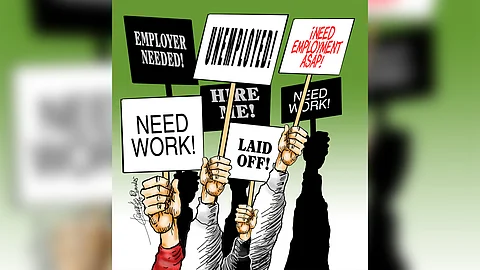
- NEWS
- the EDIT
- COMMENTARY
- BUSINESS
- LIFE
- SHOW
- ACTION
- GLOBAL GOALS
- SNAPS
- DYARYO TIRADA
- MORE

The recent report that the country’s unemployment rate in January surged to its highest level in six months is a sobering reality for millions of Filipinos.
With 2.16 million individuals jobless at the start of the year, the problem is exacerbated by inflation woes, making it increasingly difficult for many families to afford basic necessities.
This development presents a significant challenge for the Marcos administration, especially as it braces for the upcoming midterm elections in May. The question now is how the government and society can work together to recover from this setback and create more sustainable employment opportunities.
Unemployment is not just an economic issue; it carries serious political repercussions, particularly in an election year. High unemployment rates can erode public confidence in the administration, making it vulnerable to criticism from the opposition.
With inflation still a pressing issue, the rising joblessness further dampens consumer confidence and spending power, which can slow down economic growth. If left unaddressed, this could lead to a vicious cycle where businesses struggle, investments decline and more Filipinos fall into poverty.
One key factor behind this surge in unemployment is the mismatch between available jobs and the skills of the workforce. Many industries are evolving rapidly, with increased demand for digital skills and technological expertise, yet many Filipino workers still lack access to the necessary training.
Additionally, businesses continue to face challenges such as high operational costs, bureaucratic red tape, and fluctuating economic conditions, making job creation difficult.
To address the unemployment crisis, both short-term relief and long-term structural reforms are needed to boost employment.
The government, for instance, could prioritize investments in sectors that have high job creation potential, such as manufacturing, agriculture and the digital economy. Encouraging local and foreign investments in these industries can help generate more employment opportunities, especially for skilled and semi-skilled workers.
Support for micro, small and medium enterprises should be strengthened by offering financial aid, tax incentives and easier access to credit so that small businesses can recover and expand, leading to more job openings.
The education system must also adapt to the evolving job market by strengthening vocational and technical training programs. Partnerships between the government, private sector, and educational institutions can ensure that Filipinos acquire in-demand skills that match industry needs.
Investing in large-scale infrastructure projects can create immediate employment opportunities, particularly in construction, transportation and engineering. Additionally, improved infrastructure can attract more businesses and investors, leading to long-term economic growth.
The rise of remote work and the gig economy presents new avenues for employment. The government should promote digital literacy programs and internet accessibility, especially in rural areas, to enable more Filipinos to take advantage of online job opportunities.
Streamlining business registration processes and reducing regulatory barriers can likewise encourage entrepreneurs and investors to set up businesses, ultimately creating more job opportunities.
The spike in unemployment is a wake-up call for the government to implement stronger job-generation policies. While challenges remain, a strategic and comprehensive approach involving the government, private sector and educational institutions can lead to meaningful recovery.
Investing in industries with high employment potential, supporting small businesses, and equipping workers with relevant skills will help pave the way for a more resilient and inclusive economy.
If these measures are taken seriously, the country can recover from this employment setback and provide a more stable future for millions of Filipinos.
